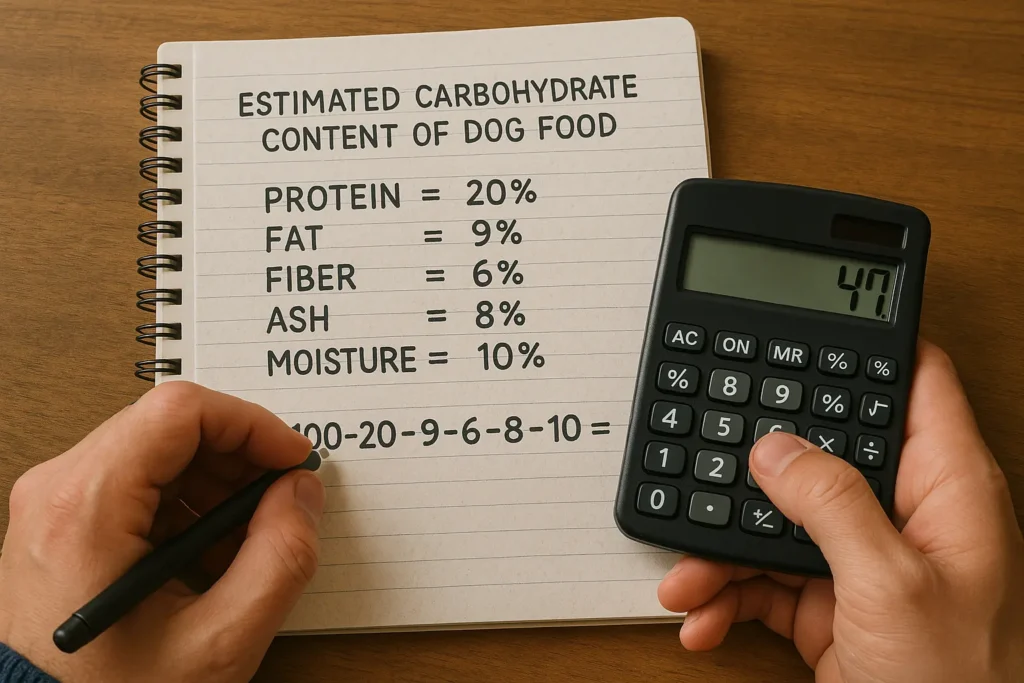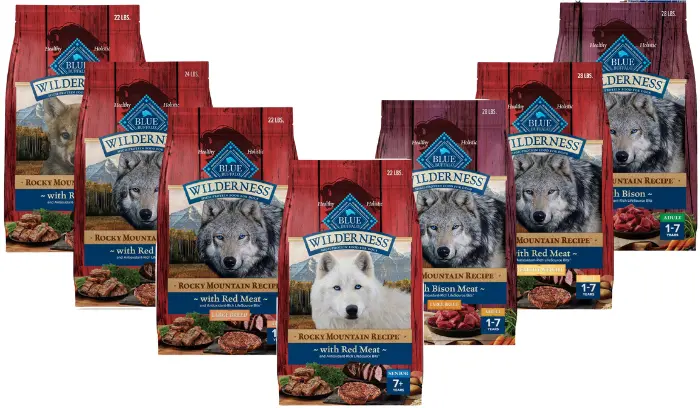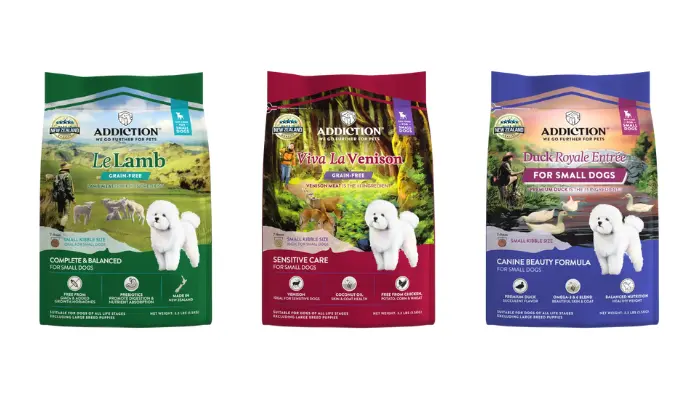How to Estimate Carbohydrate Content in Commercial Dog Foods?
- Author: Samuel James
- Published: May 18, 2025
- Last Updated: October 18, 2025

Disclosure: As a Chewy affiliate, we earn commissions for qualifying purchases.
Introduction
Understanding the carbohydrate content of your dog’s food is crucial for managing weight, blood sugar levels, and overall health. While most commercial dog food labels list crude protein, fat, fiber, and moisture percentages, carbohydrates are typically calculated by difference.
In this guide, we’ll walk you through a simple, reliable method to estimate carbohydrate content using only the information printed on the bag or can.
Why Estimate Carbohydrates in Dog Food?
Carbohydrates provide energy, but excessive carbs can lead to obesity, diabetes, or digestive issues in dogs.
Estimating carbs helps:
- Identify low-carb options for weight management.
- Manage health conditions like diabetes.
- Ensure balanced nutrition tailored to your dog’s needs.
Understanding Dog Food Labels
All commercial dog foods must provide a guaranteed analysis listing percentages of:
- Crude Protein
- Crude Fat
- Crude Fiber
- Moisture
Carbohydrate percentage is not required on pet food labels because the Association of American Feed Control Officials (AAFCO) does not mandate manufacturers to list carbohydrate content.
Steps to Estimate Carbohydrate Content
- Check the Guaranteed Analysis: Look at the dog food label for the guaranteed analysis, which lists crude protein, fat, fiber, and moisture percentages.
- Identify Missing Nutrients: The guaranteed analysis doesn’t directly list carbohydrates. To estimate carbs, you’ll need to account for the other components (protein, fat, fiber, moisture, and ash).
- Estimate Ash Content: If ash isn’t listed, assume it’s about 8% for dry food or 2% for wet food, as this is a typical average.
- Calculate Carbohydrates: Use this formula:
Carbohydrate % = 100% – (Protein % + Fat % + Fiber % + Moisture % + Ash %)
For example,
if a dry dog food lists 25% protein, 15% fat, 3% fiber, 10% moisture, and you assume 8% ash, the calculation is:
Estimated Carbohydrate Content = 100 – (25 + 15 + 3 + 10 + 8) = 39%
Tips for Choosing Low-Carb Dog Foods
- Look for limited-ingredient formulas if your dog needs fewer carbs.
- Check the ingredient list for high-carb sources like corn, wheat, or potatoes, which are often listed first in high-carb foods.
- Consult your veterinarian to determine the ideal carbohydrate level for your dog’s age, breed, and health condition.
Conclusion
This method provides a close approximation to help you make informed decisions. If carbohydrate content is already listed on the label, we highly recommend using the provided value instead of estimating with the formula above.
Always pair this estimation with professional advice from a veterinarian to ensure your dog’s diet supports their long-term health.



